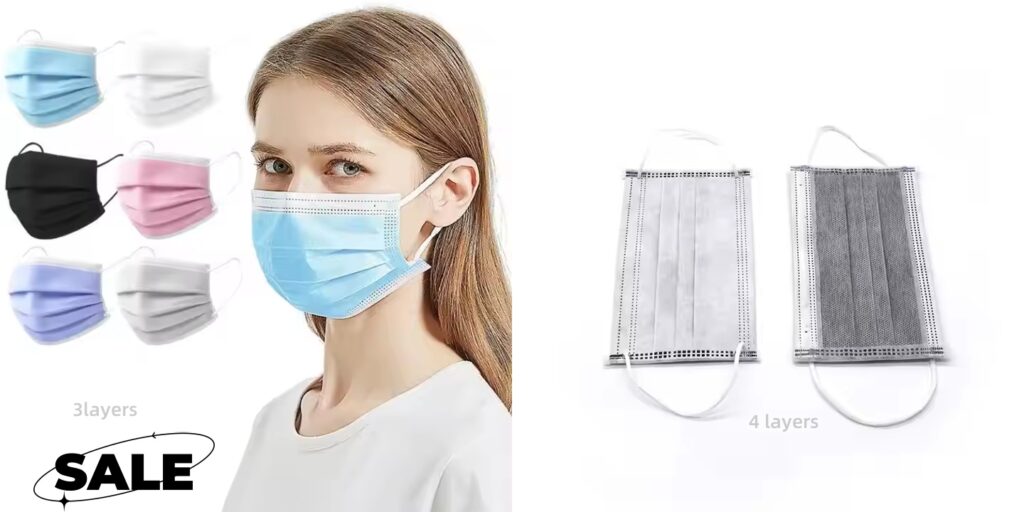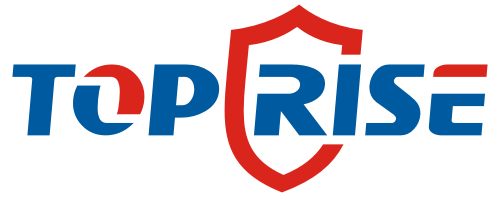Planar mask, or planar mask in Chinese, is one of the most common types of mask design used in medical, industrial, and daily protection applications. It is characterized by a flat structure; that is, the mask body presents a flat shape through the fold or folding design, can cover the wearer’s mouth and nose, and provides basic respiratory protection.
How many layers of planar mask?

Planar mask materials usually use multi-layer non-woven fabrics; different layers have different functions. Generally speaking, flat masks have three or four layers of structure, and the main materials are as follows:
Outer layer (first layer):
- Material: Spunbond Non-woven Fabric
- Function: The outer layer is mainly waterproof, which can prevent external droplets, liquids, or oils from entering the inside of the mask. The material of this layer is relatively hard, wear-resistant, and moisture-resistant.
Middle layer (second layer):
- Material: Meltblown Non-woven Fabric (Meltblown Non-woven Fabric)
- Function: This is the core filter layer of the mask, mainly used to filter fine particles in the air (such as PM2.5, bacteria, viruses, etc.). Melt-blown cloth has a high electrostatic adsorption capacity, which can effectively block germs and small particles, providing a key protective effect.
- Note: If the mask is four layers, there may be two layers of melt-blown cloth in the middle to enhance the filtering effect.
Inner layer (third layer):
- Material: Spunbond Non-woven Fabric
- Function: The inner layer is close to the skin, which is mainly used to absorb the moisture and sweat generated when the wearer breathes and keep the inside of the mask dry and comfortable. The inner material is usually soft and skin-friendly.
Extra layer of the four-layer mask:
- If there are four layers of masks, an extra layer is usually added:
Activated carbon layer or additional filter layer: enhanced protection, can filter harmful gases or odors, suitable for use in poor air quality environments, such as industrial sites.
The role of each layer of material:
- The first layer (outer layer): waterproof, anti-droplet, prevent liquid penetration.
- The second layer (middle layer): the core filter layer filters out particles and germs in the air.
- The third layer (inner layer) is hygroscopic and skin-friendly, providing comfort.
Flat masks are usually composed of three or four layers of non-woven materials, and the key is the melt-blown non-woven fabric in the middle, which is responsible for the filtering effect of the mask. The three-layer mask is sufficient to provide effective protection in daily use, while the four-layer mask is more suitable for high-risk or severe air pollution environments, providing stronger filtration capacity and protection effect.
What are the advantages and disadvantages of planar masks?
As a widely used type of mask, planar masks have many advantages, but they also have some limitations. The following is an analysis of its advantages and disadvantages:
Advantages
Comfortable to wear:
- Flat masks are lightweight and breathable and will not cause too much pressure on the face when worn, which is suitable for long-term wear, especially for ordinary people in daily life.
- The inner material is usually soft, which can be skin-friendly and reduce friction to the skin.
Easy to produce and low cost:
- Due to the relatively simple structure of the flat mask, its production process is more efficient, so the production cost is low.
- The price is more economical, especially suitable for large-scale needs, such as hospitals, enterprises, or public places.
Wide range of application scenarios:
- Flat masks are widely used in medical treatment, public health protection, industrial sites, and other scenes, which can effectively prevent droplets, dust, particles, etc., from entering the respiratory tract.
- Flat face masks are a basic personal protection tool during daily travel, flu season, and outbreaks.
Good air permeability:
The multilayer, nonwoven structure of the flat mask improves both filter performance and permeability. It will not cause serious breathing difficulties when worn and is suitable for daily use.
Adjustable design:
Most flat masks come with a nasal bridge strip, which can be adjusted according to the shape of the face, enhancing tightness and preventing air from entering from both sides of the mask.
Single-use, hygienic, and reliable:
The flat mask is disposable and discarded directly after wearing, which can effectively avoid bacterial growth or cross-infection caused by repeated use and is hygienic and reliable.
Disadvantages
Limited protection:
- Although flat masks can block droplets and particles, they have poor filtering effects on smaller particles (such as viruses below 0.3 microns) and harmful gases and cannot fully protect against viruses or air pollution in high-risk environments.
- Compared with high-grade masks such as N95 masks, flat masks have a relatively low level of protection and are not suitable for scenarios requiring high protection.
Poor tightness:
- Because the flat mask is a flat design, it cannot completely fit the facial curve, especially in the cheeks; it is easy to leak air; and the sealing effect is not as good as that of three-dimensional masks (such as N95 masks).
- In high-risk situations, such as epidemic prevention and control or confined environments, the protective ability of flat masks will be affected.
Single-use waste:
Flat masks are disposable products; the wearing time is usually recommended for 4–8 hours, and it needs to be replaced later, which means that when the frequency of use is higher, a large number of waste masks will be generated, causing a certain burden on the environment.
Not suitable for high intensity exercise:
Flat masks may cause discomfort during high-intensity exercise due to moisture or a lack of air permeability. In addition, the earhang design may loosen or fall off during strenuous exercise.
Not suitable for special environments:
In an environment with serious chemical and industrial pollution, flat masks cannot provide adequate protection, especially in the case of harmful gases, chemicals, or high concentrations of dust. Professional protective masks are needed.
What are the application areas of planar mask ?
Applications for flat masks include:
- Hospitals and clinics: Basic protection for health workers and patients.
- Public transportation, such as buses, subways, planes, etc., to prevent the spread of droplets.
- Schools and offices: daily protection to reduce cross-infection.
- Supermarkets and shopping centers: public places where people gather; protection is necessary.
- Industrial and construction sites: Prevent the inhalation of dust and particulate matter.
- Daily use at home: such as flu season or haze weather protection.
- Beauty and catering: Protect against droplets and maintain hygiene.
Conclusion
Flat masks have the advantages of low price, comfortable wearing, and wide application scenarios and are suitable for daily protection. However, it has relatively limited airtight and protective capabilities to deal with bacteria, viruses, or harmful gases in high-risk environments. For the general population, flat masks are a very practical basic protection tool, but in cases where a higher level of protection is required, it is recommended to choose a higher level mask such as N95 or KN95.


